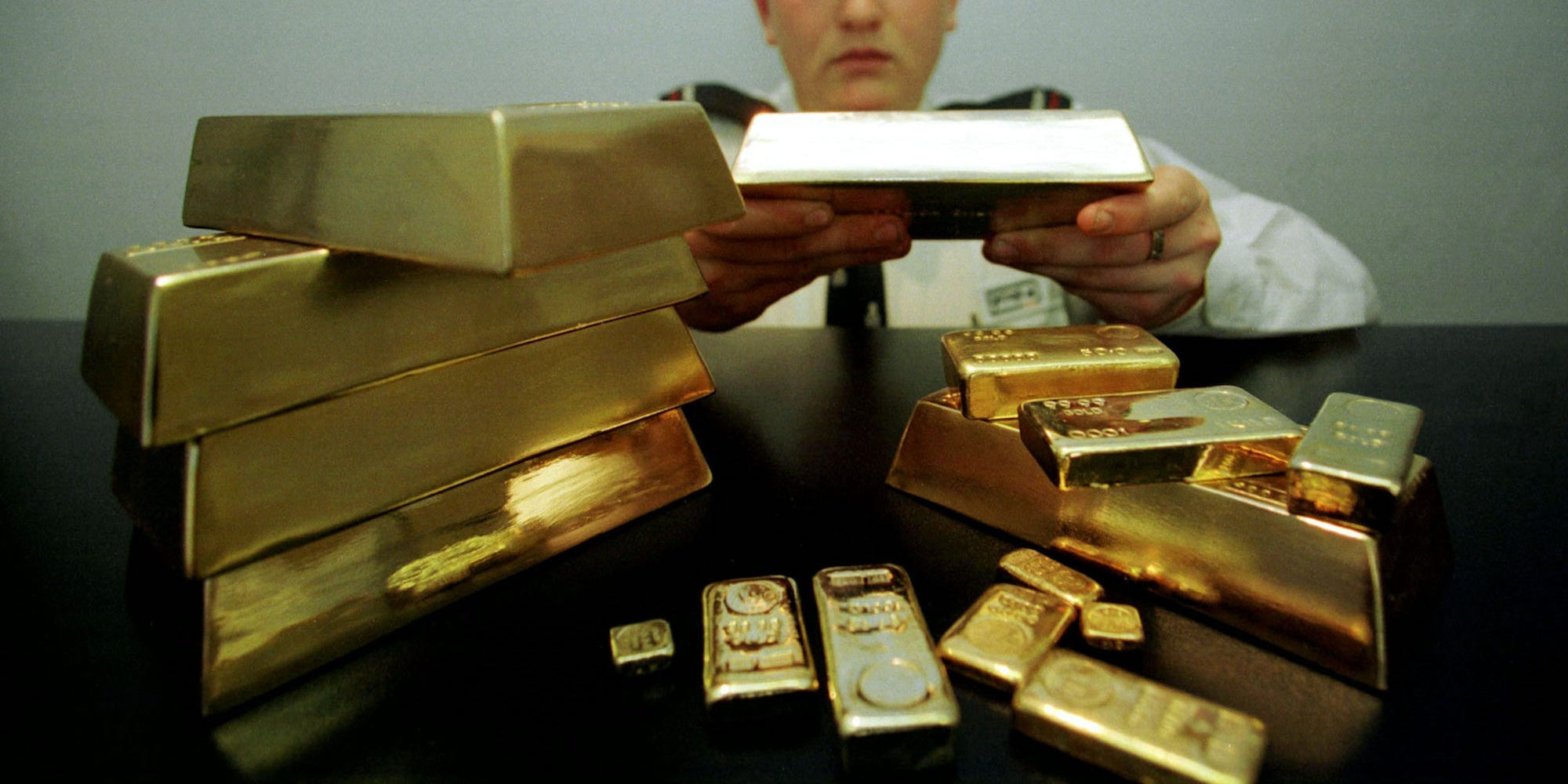A default could push gold to a new record high as investors would seek safe haven assets. In a default, a weaker dollar and falling Treasury yields could also bring gold up. Even if a last-second deal was reached, gold could see a near-term rise, RBC Capital Markets said. Loading Something is loading.
Thanks for signing up!
Access your favorite topics in a personalized feed while you’re on the go.
As lawmakers continue to lock horns over lifting the debt ceiling, gold has started to look like an increasingly attractive bet.
The precious metal has flirted this month with its record high of $2,075.47 per ounce set in August 2020, according to Bloomberg data. And while it pulled back this past week, gold is up 11% year to date and 25% from a November low.
Specific predictions about the market fallout from a US default are tricky as such an event is unprecedented. But analysts say gold will still be viewed as a safe haven.
“I wouldn’t be surprised if we had a $100 move in gold prices,” Oanda Senior Market Analyst Edward Moya told Insider. “It’s a little too tough to call, but obviously that is a historic moment that would unravel large parts of Wall Street.”
An increase of $100 per ounce would put gold above the record high. On Friday, it was trading at about $2,020 per ounce.
Lawmakers have indicated little progress on a deal to lift the debt ceiling, and they could have just a few weeks left. Treasury Secretary Janet Yellen has said the government will run out of money as soon as June 1.
In a Friday note, RBC Capital Markets said the ongoing lack of resolution could set up gold up for a near-term rise.
“Even assuming a deal is eventually reached, we wouldn’t disregard potential growing financial angst as the deadline approaches. In such a scenario, gold looks like one of the few likely candidates that would bear the burden of resulting market flows,” analyst Christopher Louney wrote.
He added later, “in the near term, we believe gold looks like the best hedge in the more immediate offing.”
Quincy Krosby, chief global strategist for LPL Financial, also expects that gold could climb in a default, saying the dollar could weaken and elevate it, given that the commodity is priced in dollars.
She also pointed to credit default swaps as a potential indicator, noting that they are correlated with gold. In April, one-year default swaps hit their highest since 2008.
“It would not be surprising to see gold as a safe haven refuge for those who are concerned that a default could, in fact, ensue,” Krosby told Insider.
Even outside of a default scenario, gold has other tailwinds that potentially set it up for new record highs.
Moya pointed to the continued buying of gold by global central banks, demand from China and India, and global rate easing, which helps gold because it’s a non-interest-bearing asset.
“So, it seems that there’s a good reason to anticipate gold could still outperform,” he said. “Will $2,100 happen this year? I think there’s still a good chance that that could happen, given the way the US economy — or the direction — the US economy is headed. So gold is probably going to do just fine, given all the risks that are on the table.”
